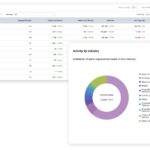I didn’t expect to be writing about the next version of Windows again so soon, but a handful of viewers watching the Ignite Keynote yesterday noticed an updated version of the Windows UI that was shown in a brief cutaway, which had a floating taskbar along the bottom, system icons in the top right, a floating search box in the top middle, and the weather in the top left. Back when I first began hearing about the Next Valley release, I was also shown preliminary design ideas that were being explored internally. Microsoft is still in the prototyping stages for Next Valley, but my sources tell me that the UI briefly shown off at Ignite yesterday is representative of the design goals that Microsoft is hoping to achieve with the next version of Windows. Microsoft is clearly drawing a lot of inspiration from GNOME and macOS here, and it sure does look nice. However, as with everything Windows, it will most likely just end up as yet another thin veneer atop the countless UI designs from Windows 3.x all the way up to now Windows 11 that you can encounter in Windows to this day. Another layer for this cursed cake.
 This year, the Linux Foundation rolled out a new and improved LFX, a powerful cloud-based solution for members and projects to foster productivity in communities of open source innovation. Our vision for LFX was to build a collaboration portal for open source projects, filled with project metrics and integrated with all areas of the community’s experience.
This year, the Linux Foundation rolled out a new and improved LFX, a powerful cloud-based solution for members and projects to foster productivity in communities of open source innovation. Our vision for LFX was to build a collaboration portal for open source projects, filled with project metrics and integrated with all areas of the community’s experience.